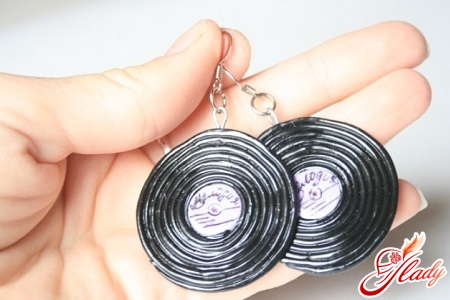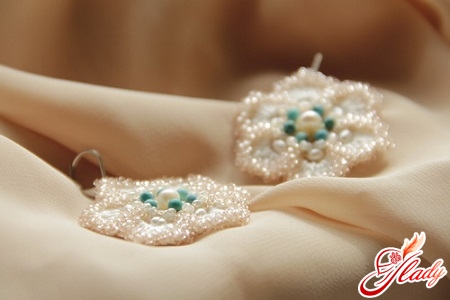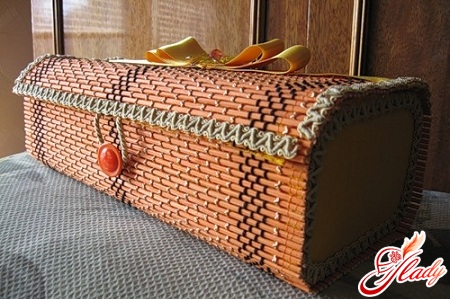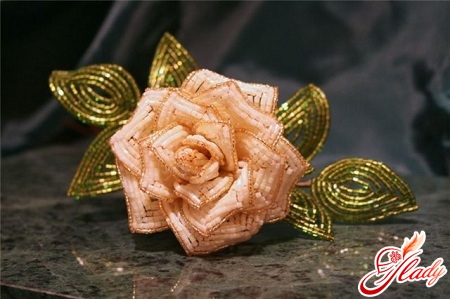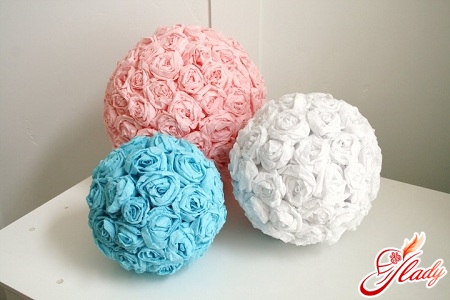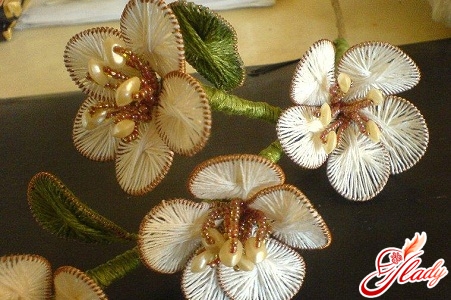 More and more often, our hobbies are starting to includeinclude types of rare and previously unknown to us handicraft art. Among such unusual types of handicraft is ganutel - a technique for making artificial flowers.
More and more often, our hobbies are starting to includeinclude types of rare and previously unknown to us handicraft art. Among such unusual types of handicraft is ganutel - a technique for making artificial flowers.
Where did the wheelchair appear?
The homeland of ganuteli is a Mediterranean islandMalta. This exclusive handicraft was invented in the monasteries of the Mediterranean and is still preserved there in its original form, as the art of making flowers for the church altar. Perhaps the ganutell technique was also known in other lands, but it is in Malta that today you can see ancient ornaments and flower compositions that decorate churches. Despite the simplicity of execution, church decoration in the ganutell technique looks like a real work of art not only on holidays, but also on weekdays. It is very labor-intensive, almost jewelry. Perhaps this is why this handicraft technique was almost forgotten. The revival of the art of ganutell began quite recently - in the nineties of the 20th century. And this is not surprising - real Maltese jewelry is elegant, light and stunningly beautiful.
What is the technique based on?
The technique is based on the art of connectionwire with thread. As a rule, this is a thin wire with a gold or silver coating, straight and twisted into spirals and springs. Threads for ganutelle are used in different colors and textures. Sometimes jewelry in this technique is made only from wire. Technically, the production of ganutelle looks like this:
- the wire is twisted into a spring;
- the spring is folded into separate petals;
- the petals are plaited with a thread;
- separate petals are collected in whole flowers.
The shape and size of the flowers produced directlydepend on the number of petals that are connected to each other, and, of course, on their shape, color and thickness of threads and wire. Petals are made according to various patterns and imitate live flowers: daisies, lilies, roses, tulips, etc. Small beads, sequins and sequins woven into the petals add additional luxury to the flowers. Compared to other artificial flowers, jewelry made using this technique has some advantages. They are lighter than beaded flowers. Stronger than fabric flowers. More durable than dried flower arrangements. Such flowers simply look elegant and still exclusive. In appearance, ganutel resembles satin products. Products are made using several basic techniques and technologies. They go well with many materials. They look great in outfits (clothes) and jewelry (costume jewelry). Lately, ganutel has become increasingly popular in wedding fashion. This technique is used to make incredibly elegant openwork tiaras and wreaths for the bride, decorative elements for wedding dresses, brooches, earrings and pendants.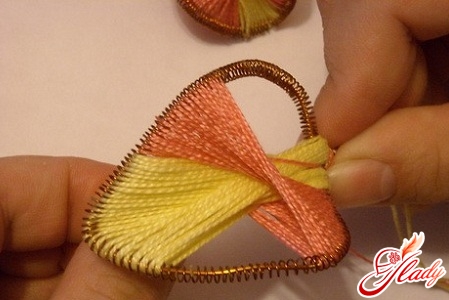
How to make a free wheelchair?
In order to make such a thing yourselfdecoration, there is nothing particularly complicated! However, it is worth considering that this painstaking work will require perseverance and accuracy from you. To make a simple (training) flower, you will need thin flexible wire (regular copper will do), medium-thickness wire and threads. Silk threads look best in these products, but you can also use others, such as floss. To begin, wind a thin copper wire (20-30 cm long) in a spiral around a thin (stocking) knitting needle or a thick "gypsy" needle. As a result, you will get a spiral spring. Mark the middle of this spiral and remove the wire from the knitting needle. Then carefully stretch it to the sides so that the turns of the spiral slightly diverge and small gaps appear between them. The first stage is complete! Next, insert a thicker wire inside the spiral, creating a frame for the rigid structure of the flower petal. Roll the spring into a petal of the desired shape and begin to braid it with thread. Winding the thread onto the frame begins in the middle, securing the thread where the petal is twisted and making the first turn through the center of its upper part. Each subsequent turn is made in the shape of a figure eight - from top to bottom, from right to left (the principle of working with thread is very similar to the principle of isonity). Moreover, the lower edge of the petal is covered with thread from its front side, the upper one - from the back. The thread should pass through the gaps between the turns. In fact, this is all you need to know for your first experience of mastering the technique. The shape of the petals can be varied, making them elongated, oval or round, creating a semblance of petals of real lilies, roses or daisies. Beads and seed beads can be placed in the middle of the flower and supplied with additional sepals, a stem and leaves. This method of winding threads is far from the only one, but it is one of the simplest. Therefore, it is better to use it for the first experience. And only then proceed to mastering more complex methods of weaving and even inventing your own. This is such a forgotten, but reviving technique of ganutel, the art of creating elegant, unusually beautiful exclusive jewelry using only wire and thread. We recommend reading:




